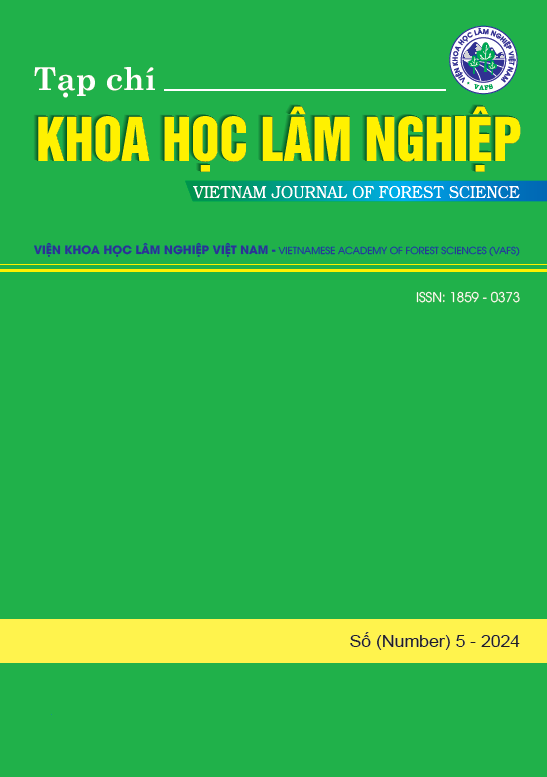NGHIÊN CỨU TẠO CÂY BẠCH ĐÀN LAI UP (EUCALYPTUS UROPHYLLA x EUCALYPTUS PELLITA) TỨ BỘI BẰNG PHƯƠNG PHÁP XỬ LÝ COLCHICINE IN VITRO
DOI:
https://doi.org/10.70169/VJFS.941Keywords:
Eucalyptus hybrid, ColchicineAbstract
Polyploids from cultured shoots of Eucalyptus hybrid (clones UP54 and UP99) were produced by treatment of colchicine. Results showed that the combination of 0.5% for 3 days was the most appropriate conditions for UP54 polyploidy induction with the induction rate of 33.33%; and for UP99, the combination of 0.25% for 4 days is the most effective with the induction rate of 24%. By comparing the tetraploid plants with diploid ones in morphology, leaves of polyploid plants were thicker, larger, and darker green.
References
Barringer BC, 2007. Polyploidy and self-fertilization in flowering plants. American Journal of Botany 94, 1527-1533
Fernando, S. C., Goodger, J. Q., Chew, B. L., Cohen, T. J., & Woodrow, I. E., 2019. Induction and characterisation of tetraploidy in Eucalyptus polybractea RT Baker. Industrial Crops and Products, 140, 111633.
Han, C., Xu, J. M., Du, Z. H., Li, G. Y., Zeng, B. S., Wu, S. J., & Wang, W., 2011. Polyploidy induction of clone of Eucalyptus grandis with colchicine. African Journal of Biotechnology, 10(66), 14711.
Levin DA, 1983. Polyploidy and novelty in flowering plants. The American Naturalist 122, 1-25.
Lê Đình Khả, Hà Huy Thịnh, Nguyễn Việt Cường, 2005. Cải thiện giống Bạch đàn cho các chương trình trồng rừng ở Việt Nam. KHCN NN&PTNT 20 năm đổi mới - Bộ Nông nghiệp và Phát triển nông thôn - Tập 5, trang 169 - 178.
Ramsey J, Schemske DW, 1998. Pathways, mechanisms, and rates of polyploid formation in flowering plants. Annual Review of Ecology and Systematics 29, 467-501,
Ranney TG, 2006. Polyploidy: From Evolution to New Plant Development. Combined Proceedings International Plant Propagators’ Society 56, 137 – 146
Udall and Wendel, 2006. Polyploidy and Crop Improvement. Crop Science, 46 (S1), 3-14.









